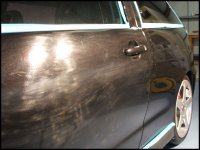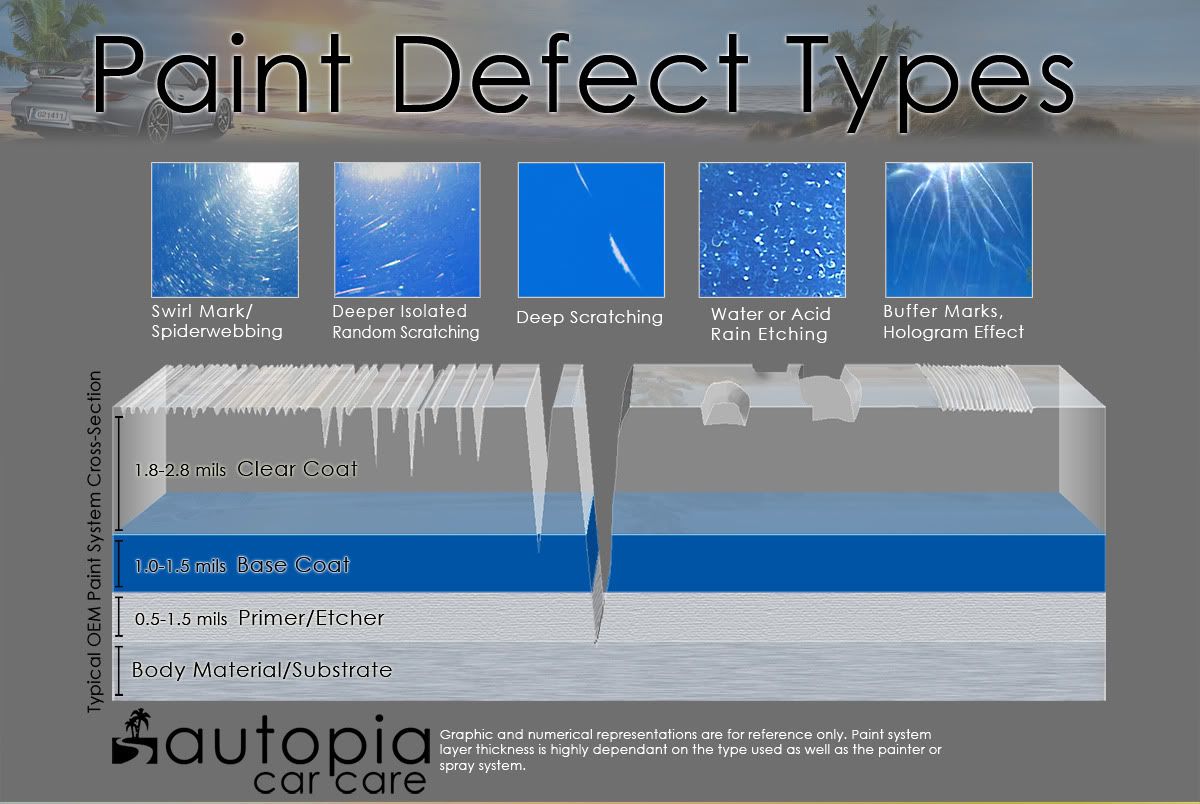ca.detailchick
New member
Would love to see a video of that David Fermani!That would be awesome!
Follow along with the video below to see how to install our site as a web app on your home screen.
Note: This feature may not be available in some browsers.
If a car is being buffed, any less than steller wash job that could potentially cause marring is a mute point. I'm all about doing things properly, but realistically too which to me means achieving the correct end result in the quickest, less effortless amount of time.
Really depends on the vehicle and how bad it is. Some wheels will simply eat up time. Door jambs that haven't been cleaned in years is different from ones that can be cleaned with a basic ONR wipe. I would say I typically spend 2-3 hours. Taping on some vehicles can be time consuming as well.


not needing to dry after washing (good water)
House of Wax- Doing it in the driveway must pose a whole lot of challenges! Let alone with hard water.
1 person does all my prepping. We have a dedicated wash bay and this is all this person does all day long. Everything he needs is just a few steps away. He gets at least 8-10 complete preps done each day as well.
Things that can affect your overall times are as follows:
**Extent to which you clean your wheels. (faces vs barrels vs. behind spokes)
Like I already mentioned, depending on the wheel AND the client's expectations, this aspect can dramatically affect your total touch time.
**Chemicals used to clean wheels. (acid vs APC vs Iron Remover)
Hands down acid based cleaners take a fraction of the time to work than ANY other wheel cleaner. Most times agitation on the outer wheel face isn't even required. Light agitation to the wheel barrel breaks up years of dirt instantly. Follow up with your pressure washer and the results are quicker/better.
**Level of decontamination (clay towel vs clay vs Iron Remover vs both)
Unless a client is wanting a 110% contaminant free finish, a clay towel with a good lube will make your paint finish super smooth which is the most important attribute. Some people get really carried away with their contamination process doing extensive clay barring and then using an iron remover after. Unless there's a major contaminant build up, this could be overkill.
**Drying of your vehicle after washing
Now this could either save you or cost you a lot of time. We water blade our windows and let our cars drip dry. And sometimes we even water blade the entire car depending. Many people I'm sure spend way too long making sure the vehicle is totally dry before starting anything. To me, this is a major waste of time on a complete detail (inside & out). The key is to get the *bulk* of the water off the car to avoid possible water spots and then go right to detailing the interior. Once you're finished with the interior, the exterior will be dry. It makes no sense to dry parts of a vehicle (rocker/lower doors/lower bumpers) when there's no chance that the sun will cause spotting to these parts due to angle.
**Water pressure (garden hose vs power washer) - engines, wheels, wheel wells & door jambs
Hands down a quality pressure washer saves you time and provides much greater cleaning power on all aspects of the wash. We let APC dwell for several minutes on the jambs, engines & wheel wells. In most cases when we blast them with the pressure washer, all the grime is already loosened by the APC and comes right off. I see some people using fancy brushes in their jambs and engine compartments and wonder just how necessary this is?
**Methods of washing (foaming vs pre-rinse)
In my opinion foaming a car wastes time and money. If a vehicle is that greasy, you'd be much better off pre-soaking with a paint safe APC. Soap doesn't provide much cleaning power on heavily soiled vehicles anyways. If you can take advantage of a pressure washer, a *quick* blast to the heavy build up will provide much greater cleaning advantages than allowing foam to dwell on a car. And I also notice that some people rinse their vehicles multiple times throughout the prep process. A good pre-rinse and final rinse is really all that is needed. No need to wash down 1/2 the car then rinse and repeat. Especially if your environment is prone to water spots. Keep the soap on there.
To drill into how we do things I prepared a quick step by step of our process:
1- Pre-rinse heavy dirt/grease from exterior, engine, wheels & wheel wells
2- Pre-soak engine, jambs, wheel wells, rockers & front bumper w/APC
3-Acid wash wheels & hand scrub wheel wells & tires
4-Power wash engine
5-Power wash door jambs
6-Hand wash exterior with MF towel as well as jambs & underside of hood
7-Rinse complete vehicle
8-Clay towel with Waterless Wash solution
9-Leaf blow critical engine components
10-Dress engine
11-Water blade as needed
Hopefully these processes can save detailers some time in the prep bay. Another thing that could help is the implementation of a low water wash depending on the vehicle and how dirty it is. you really need to analyze the time you spend and how unnecessary some of the things you do can effect your time. Yes, some of these processes are directed towards a high volume environment, but if you can achieve the end overall result with less time, less water & chemical use then you are ahead of the curve.
This is where I probably waste a lot of time simply because of what I have to work with. If I do a two bucket wash it gets done in my driveway that has no shade and our water is fairly hard. I waste a lot of time keeping the car wet while washing and then immediately thoroughly drying to prevent nasty water spots. If I had a shop to work in I wouldn't have to worry about it nearly as much.
David Fermani- "Good water" can be, uhm....relative. How do you define it in your case?
I can sometimes go without full drying if I use the CRS, but not always. My softened water (minus the CRS) isn't good enough for that.
Oh, and heh heh....nice to see you being Autopian-Heretical, admitting to using a CWB ^_^ While I'm always ranting against them, I went all hypocritical earlier this year and used mine a couple of times (luckily without doing any damage).
Interesting post. I get where you are coming from... really, I do. However, there are a few items where I'm left scratching my head. Namely, it's the pressure washing the jambs... I have seen other detailers 'hang' big beach towels over the doors and pressure rinse jambs. Still, if you are going to vacuum after and water happens to saturate or enter the carpet next to the step plate... well, it makes life harder getting the carpet adjacent to the step plate clean. AND, as we all know, those areas of carpet are usually trashed or the dirtiest of all the carpet except, say the areas near the pedals. Also, even if it isn't saturated, when vacuuming this hypothetically damp area... well it "looks clean" but the water that has impregnated the carpet next to the step plate looks clean because the water darkens the color of the fabric.
Secondly, I have never seen APC dissolve anything + pressure rinsing. Maybe it's me and my area (and it very well could be... lot's of rain in the winter just saturates any kind of seam or jamb with filth.)
Thirdly, wheel acid, while a very nice product under certain circumstances, is great for chrome... but I have seen some weird results on wheels even factory painted. So I usually defer to this product when the substrate is chrome or chrome clad. Wheel acid for me also dries super fast and if the wheel is heavily contaminated... it flash dries. And I mix ALL my chemicals with distilled water so... water PH shouldn't be a problem here.
Fourthly, how do you get textured plastic/ rubber seals clean? Granted, the customer isn't likely to notice when it is dressed BUT even after I go over these areas with a wash mitt (turns black from material degradation transfer) I will hit it with 10:1 APC and a fairly stiff brush and black is still pouring off (mainly rubber seals but some trim as well) which indicates a wash mitt/ car soap isn't enough. Very few dressings have a lengthy time so I like the trim/rubber to be as clean as possible for durability of the following dressing.
